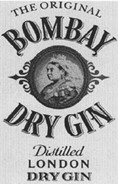Bacardi & Company Limited, the owner of Bombay Sapphire Gin, recently tried to prevent the registration of the ROYAL BOMBAY PREMIUM LAGER trade mark for goods in class 32 filed by Dickinson Distribution Group Pty Ltd.
Bacardi owns registrations for the BOMBAY SAPPHIRE  , and THE ORIGINAL BOMBAY DRY GIN
DISTILLED LONDON DRY GIN
, and THE ORIGINAL BOMBAY DRY GIN
DISTILLED LONDON DRY GIN  trade marks in Australia for a
variety of goods in classes 32 and 33, and opposed the registration
of the ROYAL BOMBAY PREMIUM LAGER trade mark on the following
grounds:
trade marks in Australia for a
variety of goods in classes 32 and 33, and opposed the registration
of the ROYAL BOMBAY PREMIUM LAGER trade mark on the following
grounds:
- The ROYAL BOMBAY PREMIUM LAGER mark is substantially identical with or deceptively similar to its registered trade marks; and
- Due to the reputation that Bacardi has acquired in its registered trade marks, use of the ROYAL BOMBAY PREMIUM LAGER mark would deceive or confuse and be contrary to law.
Bacardi argued that as BOMBAY is a distinguishing feature of each mark, there was a substantial likelihood of confusion arising amongst consumers in relation to the ROYAL BOMBAY PREMIUM LAGER trade mark. In support of this statement, they argued that it is the only proprietor of registered marks containing or consisting of the word BOMBAY in classes 32 and 33. However, the Delegate disagreed that Bacardi's rights were in BOMBAY on its own and instead reached the conclusion that Bacardi's rights (at its highest) consists of three members:
- BOMBAY SAPPHIRE (plain words)
- BOMBAY SAPPHIRE (with portrait device);
- (with portrait device)
The Delegate also noted that the marks had conceptual differences. In particular, most of the prior Bacardi marks contain the additional word SAPPHIRE in the same size and font as the word BOMBAY. This shifted the idea of the mark toward that of the gemstone originating from, or otherwise connected to, Bombay (being the old name for the Indian city of Mumbai). In contrast, the Delegate held that the "ROYAL BOMBAY" component of the ROYAL BOMBAY PREMIUM LAGER mark created the idea of royalty associated with the antiquated placename.
Based on these overall differences, the Delegate held that the ROYAL BOMBAY PREMIUM LAGER mark was not substantially identical with or deceptively similar to any of Bacardi's registered trade marks.
Bacardi also argued that due to its reputation in its registered BOMBAY trade marks, use of the ROYAL BOMBAY PREMIUM LAGER mark would deceive or confuse. It alleged a reputation in all of its registered trade marks. But based on the evidence, the Delegate held that it had only acquired a requisite reputation in the BOMBAY SAPPHIRE mark.
Having satisfied the first criteria that a reputation had been established, the next question was whether deception or confusion was likely based on this reputation. In considering this, the Delegate noted that the reputation in the BOMBAY SAPPHIRE mark only extended to a very narrow scope of goods, namely gin and, to a lesser extent, mixed drinks made with gin.
These goods, however, were held to be different to "premium lager" and having already found that the marks were not deceptively similar, it was found that deception or confusion was unlikely.
As a result, Bacardi failed to establish a ground of opposition and the ROYAL BOMBAY PREMIUM LAGER trade mark was allowed to proceed to registration. The full decision can be read here – http://www8.austlii.edu.au/cgi-bin/viewdoc/au/cases/cth/ATMO/2020/117.html.
The content of this article is intended to provide a general guide to the subject matter. Specialist advice should be sought about your specific circumstances.


